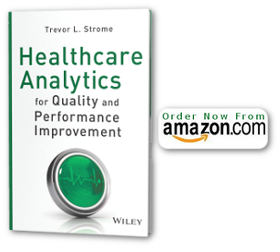I find it very enlightening to attend healthcare conferences that are clinician-focused (as opposed to technology-focused), because it is at the clinician-based conferences that we found out how well technology and information management really works in a healthcare setting. At the very least, the clinical point of view provides refreshing candor and insight into areas that many of us in the healthcare technology and information management professions take for granted.
As a case in point, during the Canadian Association of Emergency Physicians (CAEP) conference this year, one of the speakers stated that “data is power, but the narrative (or story) is what gives it traction”. One of the other speakers went so far as to say that, “data without observation is ignorance”.
These are profound statements that analytics professionals working in healthcare (and in other industries) must consider. What they mean for analytics professionals is that we must get from behind our computer terminals and statistical analyses go to where the action is – that is, the front lines of healthcare. This is where we learn the story that our data and analyses are trying to tell us.
We as healthcare information management professionals feel that our job is to learn new tools, develop new applications, and apply new analytics techniques. And, to a certain extent, this is true. But before we even start to think about slicing and dicing a new datatset, building a new dashboard, or experimenting with new visualization techniques, we must truly understand the subject of our analysis.
Decision makers now demand analytics as part of their decision-making toolkit. For decision-makers to act on the information presented through analytics, it must be presented in the context of, and provide insight into, the business. This is where I believe that the analytics professionals of today differ from report analysts in the past (where gathering specifications for canned reports was enough). Healthcare technology has evolved since then, and the healthcare industry is facing many new challenges.
Now, we must be able to work our understanding of the business issues and needs into our analytic work so the results are useful, not mere trivia. This context then provides decision-makers the detail they need to understand where issues are within their organization and where changes need to be made. Having hundreds of the wrong (or irrelevant) metrics won’t help a thing, but a critical few metrics that form a narrative that highlight a problem area can help make all the difference.
Organizational change won’t happen on its own merely by posting data throughout a hospital or using more expensive business intelligence tools. There is a true leadership component required to transform healthcare, and it’s for this leadership component that analytics can provide context. And for this context, the narrative is essential.

{ 0 comments… add one now }